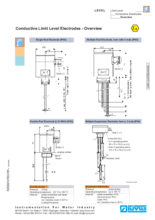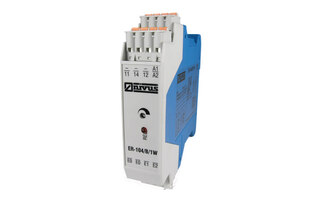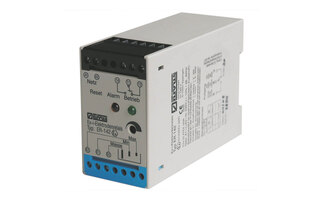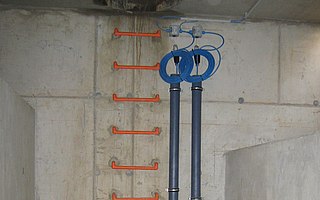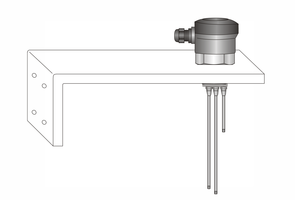Level Sensors
Rod and Suspension Electrodes
Part No. KSE0 EF; KSE0 HE; KSE0 E; KSE0 Vfor conductive level detection
Electrodes for conductive detection of limit levels and for connection to ER-142/143 and ER-104/B electrode relays
- cost-efficient to purchase
- Easy to install
- Ex-enabled
- robust
The electrodes are used for conductive detection of limit levels. The areas of use cover all sectors where liquid and conductive media are to be detected or controlled.
Limit value measurements (overflow, dry run, max. alarm) as well as min./max. control and pump control (hysteresis) can be implemented.
Construction
The electrode consists of an enclosure with up to 5 rod electrodes/suspension electrodes. The unit can be fastened using a G 1 1/2“ or G 2“ connection thread together with a wall mounting angle.
Function
A low alternating current flows once the electrode is submersed into a conductive liquid. This alternating current is evaluated by the switching amplifier (electrode relay).
Exceeding an adjustable trigger threshold will energise the according relay.
Typical applications for suspension and rod electrodes
- Shafts/containers with pump control
- Overflow messages and limit level monitoring
- Limit level messages for release/counters on stormwater treatment plants
- Monitoring according to WHG
- Overfill protection
- Dry run protection
- and many more
| Rod Electrodes | |
|---|---|
| Storage temperature | −30 °C to +100 °C |
| Operating temperature | −20 °C to +90 °C |
| Material |
|
| max. operating pressure | 10 Bar |
Specifications subject to change.
| Suspension Electrodes | |
|---|---|
| Storage temperature | −30 °C to +70 °C |
| Operating temperature | −20 °C to +60 °C |
| Material |
|
| max. operating pressure | No pressure |
Specifications subject to change.
Declaration of Conformity „Ex“ Conductive Rod and Suspension Electrodes
„Ex“ Konduktive Stabelektrode / Hängeelektrode
KSE0E-xxxxxxxEX / KSE0HxxxxxxxxEX / KSE0VxxxxxxxxEX
![[Translate to English:] Konduktive Stab- und Hängeelektroden zur Grenzstanderfassung [Translate to English:] Konduktive Stab- und Hängeelektroden zur Grenzstanderfassung](/fileadmin/_processed_/9/f/csm_Haengeelektrode_9d4b88cdef.png)
